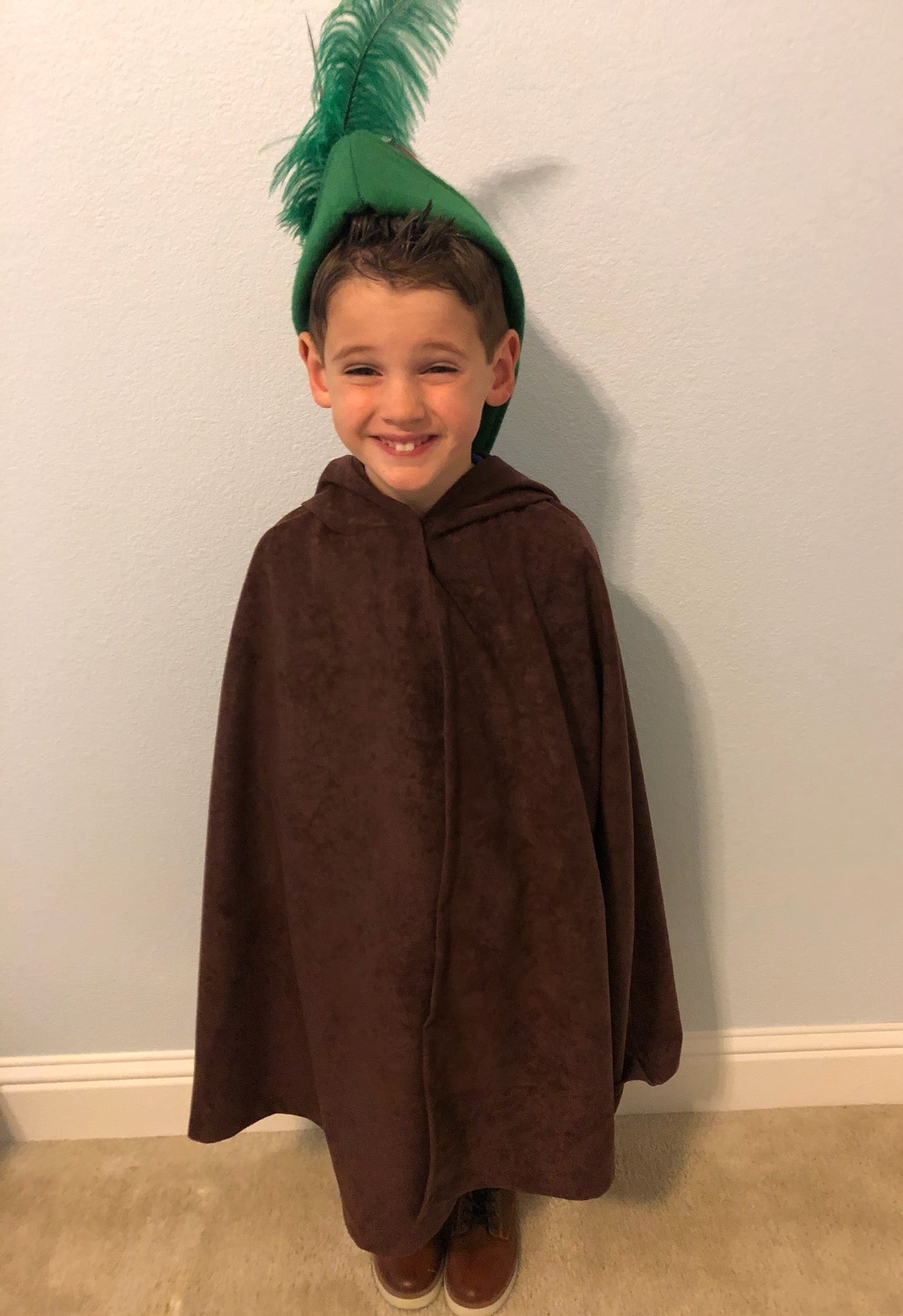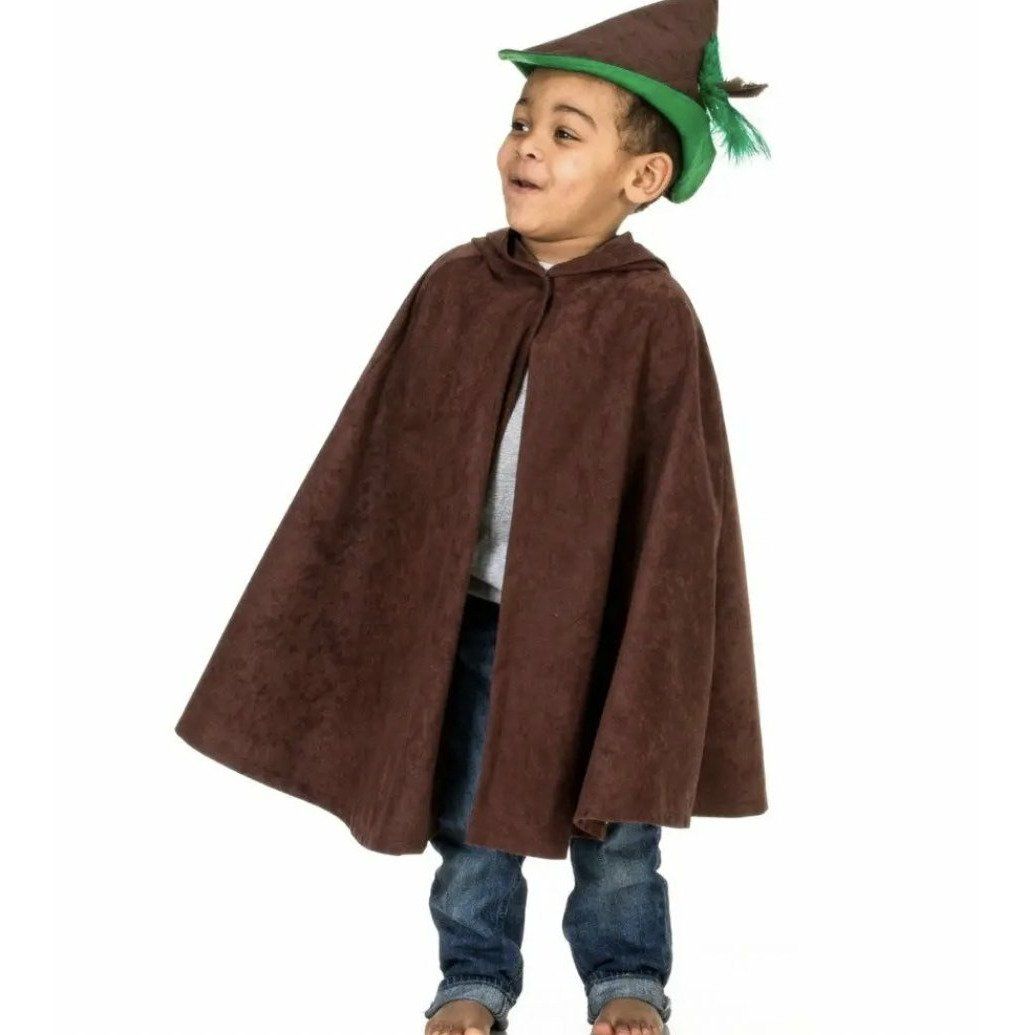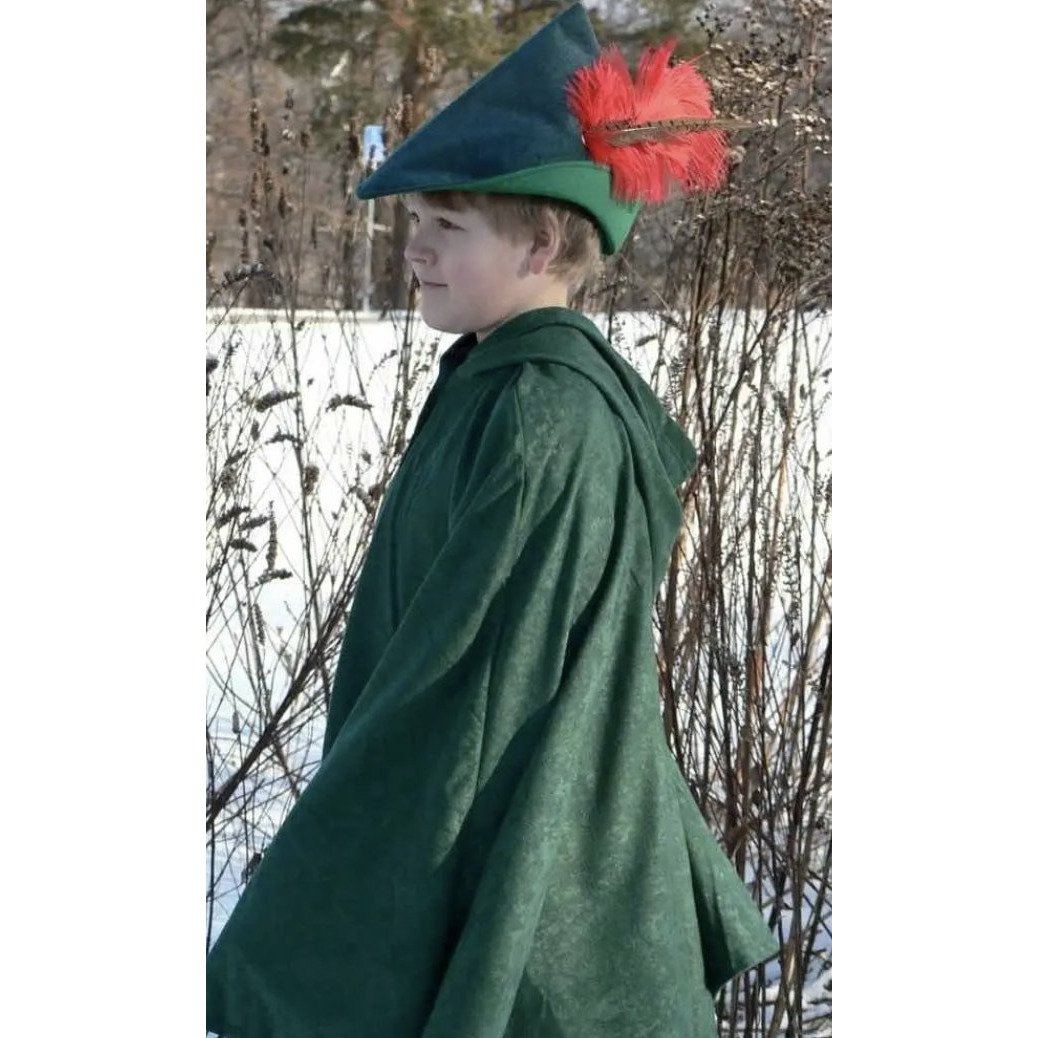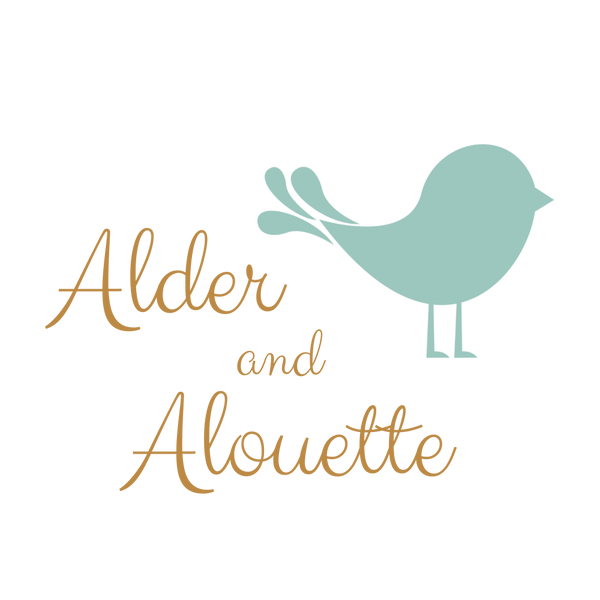Woodsman’s Cape
Woodsman’s Cape
SKU:FF-BrCp
Couldn't load pickup availability
DRESS UP FUN
CAPE: Capes are the versatile start of imaginative playtime. Robin Hood, Royalty, Wizard, Superhero…many a good story start with a great cape like this hand-sewn suedecloth woodsman fairy tale cape.
Pair it with a matching cap (pieces sold separately) for a Huntsman, Hawker, Woodsman or Robin Hood adventure.
Made of washable, soft high-quality wool-poly blend suede for the rough and tumble durability your child needs but a lovely look and texture, too. Has an easy grip closure at neck for easy wear and safety.
SIZE
- Toddler Size Cape - Center back 22"
- Child Size Cape - Center back 29"
CARE: Gentle Wash or Hand Wash, Line Dry
PRETEND PLAY ALL YEAR
This fun and easy Halloween Costume will also give hours and hours of Imaginary Play long after Halloween is over!
"So come with me, where dreams are born, and time is never planned. Just think of happy things, and your heart will fly on wings, forever, in Never Never Land." (Peter Pan)
DETAILS
- Fairy Finery
- Ages 3 years and older
- High-Quality, Durable
- poly-wool blend suede cloth
- Hand sewn by a professional seamstress
- Brown or Green
- Hat and Cape Sold separately
WHY IS DRESS UP PRETEND PLAY SO IMPORTANT
Pretend play in all forms, including dress up, during a child’s younger years is important for children’s development of imagination, which is a precursor to creativity and problem solving down the road.
A child under the age of 6 doesn’t yet hold imaginary pictures in their heads (as in themselves looking like Robin Hood) and so need props, such as dress up clothes, to help them pretend play and use their imagination to the fullest. Only once dressed as Robin Hood can they fully immerse into the imaginary world of Robin Hood.
By age 7, children’s brain development has progressed enough for them to hold imaginary pictures in their mind enough where props are no longer necessary to facilitate pretend play (though they’re still fun to have and I know of no 7-year old who will turn down props for play if given the choice)! A 7-year-old child can pretend to be Robin Hood in their minds, costume or no costume (“day dreaming” begins to emerge here, too.)
This is also why children who are six and below do better with picture books and children age 7 and above begin to do well with chapter books that have many less illustrations with less detail and less color—nothing compares to one’s own picture in the mind by this age!
Shipping
Shipping
Order Processing & Shipping
Orders typically process in 2–5 business days (Mon–Fri, excl. holidays). This time range is an estimate only, not a guarantee. Times may be less or may be longer for special orders or during high order volume.
Shipping times shown at checkout are carrier estimates only and do not include our processing time, our rural location, package pick up schedule (twice a week) or potential carrier delays. Delivery dates are not guaranteed.
Shipping Insurance & Liability
USPS and UPS include limited insurance liability coverage for up to $100 in value for loss, theft, or damage during transit to your destination. Please note this does not extend beyond $100 (up to $20 only with GroundSaver) and does not cover your package after it's been delivered. It will not cover porch pirate package theft.
Added Protection Against Porch Pirates and Any Value
For added protection, including theft shortly after delivery, Route Package Protection is available at checkout for all order values. If Route is purchased and your package is lost, stolen, or damaged during transit or shortly after delivery, Route provides a quick, digital claims process.
If You Decline Route Package Protection
If you decline Route coverage for any order, your purchase is not eligible for replacement or reimbursement in the event of loss, theft, or damage during transit beyond the limited liability provided by USPS and UPS.
Insurance Comparison
*Theft after delivery only applies to theft shortly after delivery (e.g. porch pirates). See Route for more details.
Route Protection
– Coverage: Full order value ✔️
– Loss/Damage during transit: ✔️
– Theft after delivery: ✔️
UPS/USPS Ground Saver
– Coverage: Up to $20 ✔️
– Loss/Damage during transit: ✔️
– Theft after delivery: ❌
USPS Ground Advantage
– Coverage: Up to $100 ✔️
– Loss/Damage during transit: ✔️
– Theft after delivery: ❌
UPS Ground
– Coverage: Up to $100 ✔️
– Loss/Damage during transit: ✔️
– Theft after delivery: ❌
Follow these links to read our full policy for returns, exchanges, refunds and shipping.
FAQs
FAQs
Ordering & Preorders
Q: The item I want is out of stock. When will it be back?
A: Email us at info@alderandalouette.com with the item name and any sizes or colors, and we’ll check restock dates for you.
Q: May I pre-order an out-of-stock item?
A: Yes, if it has a preorder button. If not, email us at info@alderandalouette.com, and we can check into setting up a preorder for you.
➡️ Preorder Policy:
Purchase preorder items separately from in-stock items if you want in-stock items to ship immediately. Otherwise, all items will ship together once the preorder arrives.
Q: May I special order items?
A: Contact us at info@alderandalouette.com or text 360-358-3387 if you want special quantities, colors, or items not currently listed. We’re happy to help!
Gift Options
Q: Do you offer gift wrapping?
A: Not at this time.
Q: Do you sell gift cards or certificates?
A: Yes. We offer electronic gift cards (sent via email with a code) and physical gift certificates (mailed to the shipping address provided).
Sales & Discounts
Q: Can a sale price be applied to an order placed before or after a sale?
A: No. Discounts only apply to orders placed during active sale dates.
Q: An item I wanted sold out during a sale. Do you offer rainchecks?
A: We do not offer rainchecks. Sale prices apply only to items in stock during the sale. You’re welcome to email us at info@alderandalouette.com to see if it will be back before the sale ends.
Q: I found a discount code online, but it doesn’t work. Why?
A: Only codes sent through official Alder and Alouette channels are valid. Codes found on other websites were created without our permission and are not valid.
Order Changes & Cancellations
Q: Can I cancel or change my order after placing it?
A: It depends on where your order is in processing.
- If your order hasn’t shipped yet: Contact us as soon as possible at info@alderandalouette.com or text 360-358-3387.
- If your order has shipped: It cannot be cancelled. See our Return Policy for return options once you receive your item(s).
Sales Tax
Q: Do you charge sales tax?
A: We currently collect sales tax in Washington State. If you pay through a payment provider, such as ShopPay, they may also collect sales tax. If you were able to check out without being charged sales tax, you are responsible for reporting that purchases under your state’s use tax laws.
Payments
Q: Why do you recommend paying with a credit card instead of a debit card?
A:
- Credit cards often provide additional purchase protection for lost or damaged items in transit.
- Debit card holds from preauthorization or declined payments can temporarily lock up those funds for several days. We have no control over this process as it’s through your bank or card owner.
- Refunds to debit cards take longer because the funds must return through card processors and then to your bank.
Q: Why does PayPal show both a preauthorization and a charge on my account?
A: PayPal places a temporary preauthorization hold to verify funds. Once your payment finalizes, the preauthorization will drop off automatically. It is not a double charge.
Q: Who processes my payments and refunds?
A: Payments are processed securely by third-party payment processors such as Shopify payments, Shop Pay, Afterpay, and PayPal. We do not store or handle your full payment information ourselves. Instead, these payment processors manage your transaction data securely. When we issue a refund or cancel an order, it is processed immediately on our end but may take 1–7 business days or longer to appear back in your account depending on the payment processor and your bank’s policies.
Shipping and Insurance
Q: Do you cover my package if it’s lost, mis-delivered, or damaged?
A: We purchase labels from UPS or USPS.
Both UPS and USPS cover loss or damage during transit only.
- USPS and UPS Ground Saver up to $20
- USPS Ground Advantage up to $100
- UPS Ground up to $100
- Claims must be filed by you, the buyer.
- Neither carrier covers theft or damage after delivery.
➡️ For expanded coverage, including theft after delivery, we recommend adding Route Package Protection at checkout.
Q: What is Route Package Protection?
A: Route is an optional shipping insurance that covers loss, damage, or theft during and shortly after delivery for any dollar amount. If purchased, Route handles claims directly and if approved, will reimburse you (or reimburse us to replace your items).
Q: Who handles Route claims?
A: Route handles all claims directly wit you. File your claim through Route’s email link, website, or app. If approved, they will refund you or reimburse us to send a replacement.
Q: Do you ship internationally?
A: Currently, we only ship within the United States.
Q: Do you offer free shipping discounts?
A: Occasionally. Free shipping offers will be announced when active and may require a minimum purchase amount. We announce them on our website home page banner or through email promotions.
Q: What do you charge for shipping?
A: Shipping costs are calculated directly by USPS or UPS based on package size, weight, and distance. Both companies are connected to our checkout system and provide a live rate. They also provide delivery estimates either at checkout or when we purchase the shipping label, but these don’t take into account our order processing time, rural location or our twice weekly pick up schedule. As such, they are estimates, not guarantees. You will get a better estimate once the product is picked up and begins moving within the UPS/USPS network.
Q: How long will it take to receive my order?
A:
- Shipping Time: Depends on USPS or UPS schedules and pickup days. We schedule two pick ups or drop offs on the mainland a week.
-
Orders placed Thursdays–weekends may ship after the weekend due to carrier schedules.
➡️ See our Shipping Policy for full details.
Q: Will I receive a tracking number?
A: Yes. Once your shipping label is created, you will receive tracking information by email. If you don’t receive it, check your spam or promotions folder.
Q: Why does it take a few days for my package to arrive if I live nearby (like Olympia, WA)?
A: Even for local deliveries, USPS first sends all packages from our post office to the regional sorting hub in Kent and Seattle. From there, they route back to Olympia, or other nearby towns, for final delivery. Because of this USPS system, local packages usually take 3–4 business days instead of arriving next day, even if you live close by.
Returns & Exchanges
Q: How do I return or exchange a product?
A: See our Refund & Exchange Policy for full requirements and item eligibility.
Product Safety & Certifications
Q: Are your art supplies safe for children?
A: Most art supplies are ACMI + AP certified as nontoxic. If not, they will be clearly marked as for ages 13+ only.
Q: What safety certifications do your products carry?
A: Our products meet or exceed different certifications depending upon what they are (art supplies, toys, wool, cotton, etc), such as CPSIA, CE, UKCA, USDA Organic, GOTS, GOLS, Bioland, and OEKO-TEX standards where applicable. Please see individual product pages for details.
Q: Are your wooden toys treated with finishes?
A: Many wooden toys are unfinished or sealed with natural oils such as linseed oil or beeswax blends. If treated, it is noted on the product page.
➡️ Wood Toy Care Tip:
Maintain toys with child-safe plant-based oils or oil and beeswax blends whenever they appear dry, before storage, or after exposure to water.
Q: Do you offer educational discounts?
A: Yes. We offer bulk or large order discounts for schools if paid via invoice or verified through the school.
Q: What ages are your products for?
A:
- Toys: Primarily ages 0–8 years (see individual product listings).
- Books: Ages 0–12 years, plus selections for parents, crafters, and educators.
- Art Supplies: Suitable for children and adults.
Q: What type of wool do you carry?
A: We only carry non-superwash wool, meaning it is untreated by plasticizers and is 100% natural. To clean, hand wash in mild soap with cool or warm water, gently squeeze out water (never wring), and air dry to avoid felting, unless felting is your intention.
General
Q: How often do you update your policies?
A: We reserve the right to update policies at any time without prior notice. Please review them periodically.
Still have a question?
Email us at info@alderandalouette.com or fill out our Contact Us form, and we’ll be in touch as soon as possible.
Special Order items
Special Order items
Special Order Items
Items marked as Special Order are not kept in regular stock due to space limitations (e.g. large harps, Waldorf play stands, or bulk quantities of lesson books). These are ordered on demand from our distributor in the Pacific Northwest.
Once shipped from the distributor, they usually arrive to us within 3 business days during non-peak times, after which we promptly ship them to you. The distributor typically processes orders within 2–3 business days but may take longer during busy seasons. Please note they are closed on weekends, holidays, and from mid-December through mid-January.
High-quantity orders may also be treated as special orders. For example, small orders (1–3 boxes of crayons or 6 lesson books) ship from our inventory. Large orders—such as 20 boxes of crayons or three 10-packs of lesson books—may be ordered from the distributor instead, adding an additional 1–3 business days to processing.








